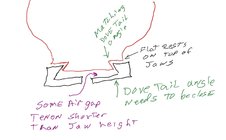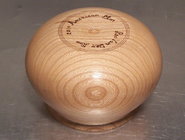When hf’s start to get ~1.5 L/D I find a longer tenon, ~1”, helps stability. The base and tenon can be made large, with a shorter tenon, and then cut down as you approach the bottom, or a longer tenon, either works to offset the torque created by the length.Great thread!
I'm curious what you folks (primarily Vicmarc users) choose for jaws in order to properly hold hollow forms in a chuck?
Shark jaws of some type or the same dovetail jaws as for making bowls?
Cant speak for Vicmarc, but I use Oneway tower jaws for this. The tower jaws hold bowls just fine and the taller jaw provides easier access to the bottom, a win-win solution.



